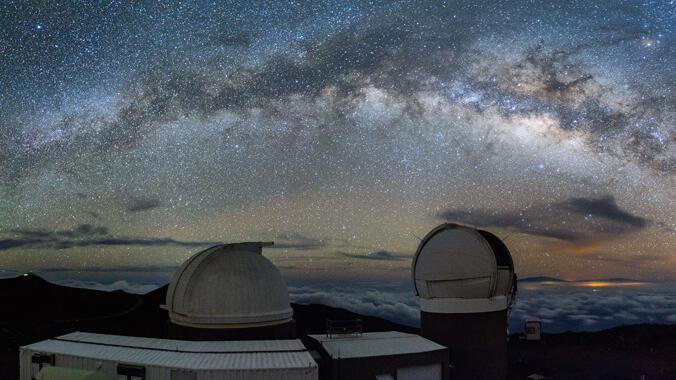 (AGENPARL) - Roma, 16 Marzo 2023
(AGENPARL) - Roma, 16 Marzo 2023(AGENPARL) – STATE COLLEGE gio 16 marzo 2023

It is the largest multi-band data release of nearby supernovae ever — slightly fewer than 2,000 objects — and is the first to use photometric classification and photometric redshifts — the increase in wavelength that astronomers observe when objects in space are moving away from us — extensively. This is critical for the upcoming Vera C. Rubin Observatory Legacy Survey of Space and Time, a planned 10-year survey of the southern sky, for where there are too many objects to get spectra, said the researchers.
“Much of the time-domain universe is uncharted,” said Gautham Narayan, deputy director of CAPS and assistant professor at UIUC. “We still do not know the progenitor systems of many of the most common classes of transients, such as type Ia supernovae, while still using these sources to try and understand the expansion history of our universe. We’ve also seen one electromagnetic counterpart to a binary neutron star merger. There are many kinds of transients that are theoretically predicted, but have never been seen at all.”
Narayan stated that “With high-redshift experiments such as the Vera C. Rubin Observatory and the Nancy Grace Roman Space Telescope about to begin operations, we saw an opportunity to establish our Young Supernova Experiment to be a low-redshift anchor. We can probe time-scales that these newer experiments cannot and find lots of transients in the nearby universe to compare to their samples in the distant universe. In particular, with this data release, we made extensive use of AI and machine learning techniques to classify the data release sample – techniques that will be crucial for Rubin and Roman.”
This groundbreaking effort could not have succeeded without the collective partnership between the University of Hawaii, UCSC, DARK, NCSA, UIUC, and Penn State. Using Hawaii’s Pan-STARRS1 telescope to collect the images, DARK’s enhanced processing of the data on its computing cluster, UCSC’s organization of the survey and data hosting, and NCSA and UIUC’s analysis — it is an outstanding achievement for multi-institution research.
“This survey is a discovery portal,” said Ryan Foley, assistant professor of astronomy and astrophysics at UCSC, who led the organization of the YSE survey project. “We are finding thousands of interesting objects, which we can then follow and study with additional observations to understand what we’re seeing.”
Mark Huber, a senior researcher at University of Hawaii’s Institute for Astronomy, and deeply involved in the YSE project said, “Pan-STARRS produces a steady stream of transient discoveries, observing large areas of the sky every clear night with two telescopes. With over a decade of observations, Pan-STARRS operates one of the best calibrated systems in astronomy with a detailed reference image of the static sky visible from Haleakal?. This enables rapid discovery and follow up of supernovae and other transient events well suited for programs like YSE to build up the sample required for analysis and this significant data release.”
Director of Pan-STARRS Observatories Ken Chambers added “this collaboration with the Young Supernova Experiment makes exceptional use of Pan-STARRS’ ability to routinely survey the sky for transient phenomena and moving objects. We have provided an unprecedented sample of young supernovae discovered before their peak luminosity that will be an important resource for supernova researchers and cosmologists for many years. Looking ahead, Pan-STARRS will remain a crucial resource in the Northern Hemisphere to complement the Rubin Observatory in the Southern Hemisphere.”
In addition to Villar, the research team at Penn State includes postdoctoral scholar Conor Ransome and graduate students Kaylee De Soto and S. Karthik Yadavalli.
Fonte/Source: https://www.psu.edu/news/eberly-college-science/story/thousands-new-cosmic-explosions-discovered-young-supernova-experiment
